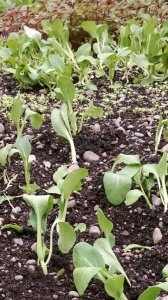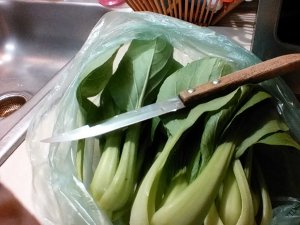- Thread starter
- #31
digitS'
Garden Master
This very same post is in the "eating from the garden" thread.
Chard!
This has worked so well I will mention it in 2 threads : here and in the warm season greens threads. Yeah!
In something like 6 weeks from sowing, the chard is plenty big enough for the kitchen. The edible amaranth was last week. They beat out the bok choy through the heat of mid-summer, growing where the potatoes had grown, through several months earlier. Yay!
I harvested a few bok choy plants today, for stir fry tomorrow. From 3 sowing beginning in mid-July and including the last group, which will be moved into the greenhouse next month, I should have bok choy any 2016 day from here on out .
.
Since orach volunteers were moved in amongst the potatoes when they were planted about the first of April, this bed has already been in continuous production for 5 months. Bushels of potatoes, all those greens, a couple of handfuls of snow peas soon, even several flats of plants for the winter greenhouse. Imagine if my entire vegetable garden was maintained to this level of production ..!
Steve
Chard!
This has worked so well I will mention it in 2 threads : here and in the warm season greens threads. Yeah!
In something like 6 weeks from sowing, the chard is plenty big enough for the kitchen. The edible amaranth was last week. They beat out the bok choy through the heat of mid-summer, growing where the potatoes had grown, through several months earlier. Yay!
I harvested a few bok choy plants today, for stir fry tomorrow. From 3 sowing beginning in mid-July and including the last group, which will be moved into the greenhouse next month, I should have bok choy any 2016 day from here on out
Since orach volunteers were moved in amongst the potatoes when they were planted about the first of April, this bed has already been in continuous production for 5 months. Bushels of potatoes, all those greens, a couple of handfuls of snow peas soon, even several flats of plants for the winter greenhouse. Imagine if my entire vegetable garden was maintained to this level of production ..!
Steve

 .
.
